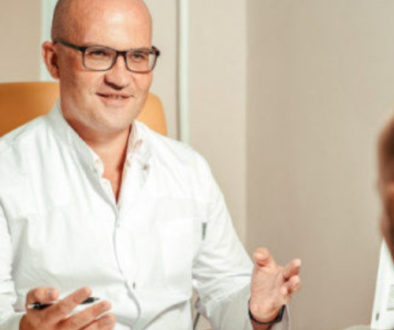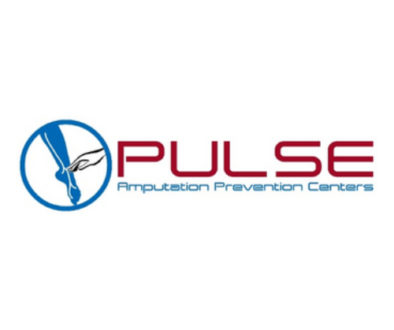A Rapidly Changing Wound Care Landscape
The COVID-19 pandemic has disrupted the healthcare industry more in the past four months than it has changed in the last decade. Moreover, the pandemic has had an even greater impact on wound care than other service lines. This is because the pre-pandemic model of wound care was primarily site-specific and performed in a hospital based outpatient department, what we commonly call a “wound center.” These wound centers are commonly located in the physical space of the hospital.
Early during the pandemic, the United States Surgeon General, CMS, the American College of Surgeons, and many state and local governments advised against and — in some cases — banned non-essential medical and surgical procedures to mitigate the spread of the Coronavirus. Some hospitals misclassified wound care as non-essential and others closed wound centers in order to limit outpatient traffic in the hospital.
The Alliance of Wound Care Stakeholders drafted guidance on March 20, 2020, that described wound care as an essential service that helps to prevent ED visits and hospitalizations in a group of co-morbid patients vulnerable to the extreme complications of COVID-19.
The New Wound Care Model Emerging
The wound care community has quickly mobilized to help define the new pandemic model of wound care in an article published in WOUNDS in April 2020 titled, “Wound Center Without Walls.”
The pandemic is likely to affect the delivery of healthcare services, and especially wound care services, for up to two years. The Wound Center Without Walls (WCWW) helps to shift the care of wound patients to lower risk settings, such as the home and physician’s office. There will be an intentional reduction in utilization of advanced wound and vascular services during the pandemic. But the model hinges upon effective triage of the wound patient to determine the appropriate site and urgency of care. In “Wound Center Without Walls” we proposed the “Pandemic Wound Triage System (Fig. 3)” to provide guidance.
It is best to implement a triage system that can be completed virtually, like the one presented in the WCWW manuscript. Telemedicine has become a large part of the WCWW since it creates a regular communication portal between the patient and provider in which the wound can be evaluated, education can be given and new dressings can be ordered.
In most cases, telemedicine will not completely replace face-to-face visits, but it can reduce the frequency, thus reducing the patient’s overall risk of COVID-19. Ideally, face-to-face visits could be reduced by telemedicine check-ins. It is desirable to have a patient who is savvy enough to operate the hardware on their end, but family members and caregivers can assist with this.
New Waivers for Telemedicine
The Centers for Medicare and Medicaid Services (CMS) has provided several waivers by emergency relief to facilitate telemedicine for beneficiaries, because they believe it is safer for patients to stay at home.
Let’s review some of the waivers and new policies (note these are only for Medicare patients):
Any Medicare patient has access to telemedicine in any setting
This means a patient at home can see a doctor by telemedicine or a patient in an emergency department or on the hospital floor or in a nursing home. The reimbursement for this has also changed. Providers can bill office E&Ms when seeing patients by telemedicine at home, or the consult code for the appropriate setting in other places of service.
Simultaneous visits are now allowed
Now a home health nurse can be on site and facilitate the telemedicine visit with the provider. Both the provider and home health agency can bill for the visit.
Dressings can now be prescribed by telemedicine
Previously, a face-to-face visit was required to prescribe surgical dressings. Now a telemedicine visit will suffice.
A facility fee can be billed for hospital outpatients
If the patient is registered as a hospital outpatient, like in a wound center, the facility can receive 40% of the physician fee schedule for coordinating the visit.
HIPAA rules have been waived
The ONC has waived the HIPAA compliant requirements for telemedicine software, so now any private communication software accessible to the patient and doctor (FaceTime, Zoom, Facebook Messenger, etc.) can be used for the visit as long as the provider is acting in good faith.
The provider can be licensed in any state
CMS waived the requirement that the provider be licensed in the state where the patient is. However, check to make sure the state board has also waived that requirement. About 40 states have. Look at the Federation of State Medical Boards website for current waivers.
Audio-only calls recently received higher reimbursement
In response to comments from physicians that some patients simply can’t operate video software, CMS increased the reimbursement for audio-only calls, but there are separate codes for these, not the E&M codes that CMS allows for the video calls.
Final Thoughts
Recently I wrote the manuscript “Wound Center Without Walls”, describing the best practices for wound care during the COVID-19 pandemic. Telemedicine is obviously a large part of the WCWW; however, it has its drawbacks. If the video or internet connection does not allow for high-resolution images, it can make evaluation difficult. In this case, telemedicine can be supplemented by store-and-forward photo capabilities to provide better resolution images.
Documentation of telemedicine visits may also be problematic since many EMRs don’t support this function. It is also important to have a good consent process with the patient since telemedicine alone may lead to some missed diagnoses. Furthermore, telemedicine won’t allow for some of the best practices in wound care, such as debridement and offloading. In these cases, perhaps telemedicine fits best as a tool to reduce the frequency of office or clinic visits, but not totally eliminate them.
In any case, in my opinion, telemedicine is here to stay. Patients have high satisfaction. Reimbursement is approaching levels that are equivalent to physician office visits, so the wide adoption during the pandemic is likely to continue in the post-pandemic model of wound care. If you are looking at ways to adapt to this changing landscape, CarePICS is a company already embracing these new telemedicine models and providing value to podiatrists. Take a look at how their Visit application connects doctors to patients and supports remote patient monitoring and self-care.



